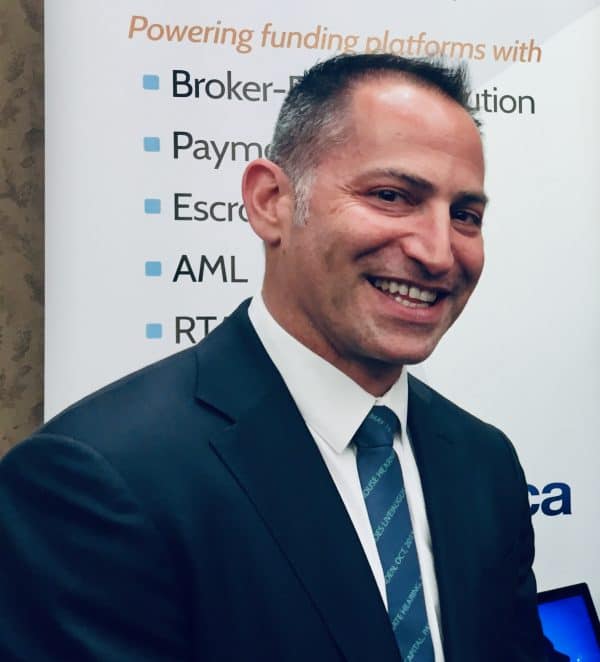
During 2022, Reg CF, the smallest crowdfunding securities exemption, took a bit of a hit as the number of investors declined, and the total amount of investments dropped by 12.8% from $578.8 million in 2021. This is according to a report by Crowdfund Capital Advisors (CCA), a firm that tracks Reg CF issuers and offerings. These numbers went in the wrong direction in 2022, even after the SEC increased the funding cap for the exemption in the Spring of 2021 to $5 million from $1.07 million. The cause? The challenging economic environment including record-high levels of inflation and rising interest rates. As the Fed wants, everyone is pulling back in this risk-off environment, preserving capital while leaving some smaller firms in the lurch.
According to CCA, since 2016, private companies have raised a total of $1.6 billion under Reg CF [Regulation Crowdfunding], providing access to capital for more than 5000 smaller firms. At the same time, the Reg CF ecosystem has supported over 300,000 jobs while boosting access to capital for underserved communities.
CCA reports that during 2022, over 320,000 investors participated in more than 1,580 offerings, down from a record 543,000 investors in 2021.
The average raise fell from $450,000 to $365,000 even though they were able to raise more money under the exemption.
The average and median valuations hit $29.6 million and $12.9 million, respectively, in 2022. This increase was boosted by 30 offerings with $100 million+ valuations.
The total market value of crowdfunded companies increased from $33 billion to $54.2 billion.
The number of issuers raising over $1 million jumped to a record high, with 21 issuers (twice as many as in 2021) raising the maximum of $5 million.
Firms raising money using Reg CF used 52 intermediaries, up by 21% over 2021. Wefunder, StartEngine, Republic, SeedInvest, and Equifund were the top five leaders, accounting for over 83.7% of all the funding.

Sherwood Neiss, Principal at Crowdfund Capital Advisors, issued a statement on Reg CF in 2022, explaining that the economic, social, and geopolitical turmoil spilled over to investment crowdfunding.
“This led to a bumpy road for the industry. While demand for capital remained strong among startups and small businesses, overall investments dropped for the first time, yet average check sizes rose.”
Neiss added a positive note that in spite of the challenges, stronger companies are leveraging Reg CF, as indicated by their maturity and stronger balance sheets. He said that investment crowdfunding has “found its footing,” predicting it will scale to $2.5 billion in annual funding by 2030.
“The fact that we didn’t see a drop in the number of issuers speaks to the viability of investment crowdfunding as a fundraising tool,” stated Neiss, adding that he expects there to be forthcoming liquidity and profits for many early investors, an important metric for industry success. At the same time, Neiss realizes there will probably be a valuation reset as investors will demand lower valuations.
CI connected with Neiss with some additional questions regarding investment crowdfunding as well as the environment for access to capital. We asked Neiss his opinion on the impact of rising interest rates and access to capital. Neiss said this has impacted firms in need of financing a lot:
“As the Fed has increased interest rates, bank borrowing has become more expensive and slowed. Increased interest rates also lead to fears about increased loan defaults. These variables together may be why 2022 saw another strong year for online small business borrowers on platforms like Honeycomb and Mainvest. Small businesses may be turning to their customers and community for capital rather than being turned away from their banks or forced to pay high-interest rates on their credit cards. That being said, after falling for two years, we saw the average interest rates tick from 8% to 8.2% for debt offerings. This is still much cheaper than 20% on a credit card,” said Neiss.
As CI has reported in the past, there is a proposal for a Jobs Act 4.0 (JA4) on the table. We asked Neiss if this legislation becomes law will it mitigate some of the challenges? Neiss said yes, it would, reflecting on the original JOBS Act being signed into law back in 2012. At that time, it was the “great unknown,” but now we know the positive impact it has had on entrepreneurship, jobs, and local economies.
“Seven years into it, we can say yes!” stated Neiss. “Now the next frontier is in providing liquidity to investors. Provisions of the JOBS Act 4.0 would address this. We must ensure that investors in secondary transfers are afforded current information about how a company whose securities are available for sale is performing. By incorporating a trustworthy, transparent ongoing disclosure regime into secondary trading, we can celebrate both an on and off-ramp for issuers and investors.”
Neiss said that policymakers need to be listening to encourage entrepreneurship. There is a lot of talk about how small businesses are a jobs engine and entrepreneurship is the key to keeping America innovating. But Washington needs to try to step outside of politics and into the lives of the people who are trying to achieve the goals that Washington seeks.
“Our elected representatives need to be voting for policies that achieve these goals despite which party promotes them. This cannot be a zero-sum game, or we will all lose. Entrepreneurship doesn’t care what party you are from but what problem you can solve.”
So are there additional policy moves that could be enacted to encourage more investment in private firms? Neiss said we need to leverage existing market structures, like the diligence and capital of a lead investor, to offset the bureaucracy of exempt offerings.
“We have incubators and accelerators that are very challenging to get into … put their cohorts through extreme training, and launch them on solid foundations. We should award those companies with more streamlined access to capital (I.e., reduced audit requirements) when it comes to regulation/legislation. We also need to be promoting tax credits to encourage investments. And as mentioned above, promoting policy that will facilitate liquidity. Because if investors can see that their capital doesn’t need to be tied up, it will drive more capital into these early-stage companies.”
While Neiss is clearly a proponent of online capital formation and enabling smaller investors to participate in the private securities markets, some public officials believe that investing in private firms is too risky for smaller investors. Neiss said that while investing in private firms may be riskier, that is not the job of politicians and bureaucrats to obstruct investors from participating in private markets.
“Their job should be to create frameworks that allow people to take calculated risks but not tell them what they can and cannot do with their money. Investing in the public markets is risky,” said Neiss. “Just because a company is public doesn’t mean its stock price will always go up. It is about disclosures and access to information. If investors have information to make an informed decision, they should be able to approach an investment and decide what is right for them.”
Like many people, Neiss believes that small business creation is vital.
“There’s a reason why so much research comes from universities and innovation comes from entrepreneurship. It is because these ideators are small and can innovate without the bureaucracy or cost of a large institution. If we want to keep innovating, we must keep promoting where that innovation comes from. And in my mind, that’s small business. Because those small ones that hit the target become the big ones. And the more of those we can get, the better off we will be. And I believe, many of them will come out of investment crowdfunding.”
In the past years, the investment crowdfunding industry has evolved and moved into new markets along with some consolidation. Neiss said he has been impressed with what top platforms have been able to do while noting it has been difficult for new entrants to gain traction.
“We are seeing the consolidation happening now. Next up will be institutional participation,” Neiss stated. “I believe this will happen through data and AI-driven funds that facilitate the diversification of institutional capital into select investment crowdfund offerings. If we can create a pathway for institutions to invest, we will see more capital appear, and I believe more winners exit. These companies will have stronger balance sheets and will be able to scale much faster thanks to this capital.”
So what are Neiss’s expectations for 2023 in regard to online capital formation? A rebound, perhaps, or more of the same?
Neiss is not very optimistic about the first half of 2023, expecting performance similar to the last six months of 2022. But if we can steer clear of “recessionary doom,” he predicts an uptick in both issuer and investor activity as things return to a sense of normalcy.
“Maybe with valuations more realistic for the stage of a company …” shared Neiss. “That being said, I am long on online capital formation. It will continue to grow and scale, and it won’t be long before we have our first billion-dollar year.”

